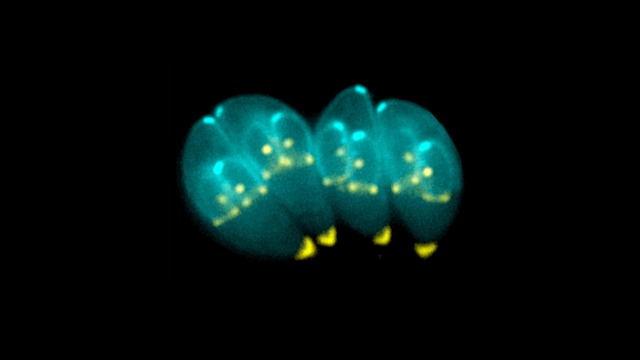Marine Parasite of the Month July 2021-Answer
The parasite for this month was the Loxothylacus panopaei, which is often just referred to as a crab barnacle that can change the gender of a crab. The most common way to identify this parasite is by looking on the underside of the crab for what looks like an egg sac, but is really a parasite egg sac. The crab gets tricked into taking care of the parasite eggs and larvae, and essentially removes the crab’s ability to reproduce. These parasites are having a devastating effect on the mud crab’s populations, due to their inability to reproduce while infected. This could very easily mean endangerment or extinction in the not so far future. A study done in 1994 showed that these parasites can infect hosts over a 10-30% salinity range, which is a very large range as the general salinity of the ocean is 33-37 ppt (parts per thousand) (Walker et Clare, 1994). A 30% change would expand this range to 23.1 – 48.1 ppt, allowing this parasite to have a very wide range of habitat. Another tell-tale sign of this parasite is their energy consumption and output. A study done revealed that infected crabs ate less and exploited less energy than non-infected crabs (O’Shaughnessy et al, 2014). While there is no known treatment or medication for this parasite, prevention of infection is likely key to stopping the invasion of this parasite, as is with many others. If the crab does not get infected, it will still be able to reproduce and continue to add to the population.
Posted by summer intern Abby C.
Sources: https://insider.si.edu/2012/09/undersea-parasite-turns-male-mud-crabs-female/ https://invasions.si.edu/nemesis/chesreport/species_summary/Loxothylacus%20panopaei
Fernando Alvarez, Anson H. Hines, Marjorie L. Reaka-Kudla, The effects of parasitism by the
barnacle Loxothylacus panopaei (Gissler) (Cirripedia: Rhizocephala) on growth and survival of the host crab Rhithropanopeus harrisii (Gould) (Brachyura: Xanthidae), Journal of Experimental Marine Biology and Ecology, Volume 192, Issue 2, 1995, Pages 221-232, ISSN 0022-0981, https://doi.org/10.1016/0022-0981(95)00068-3.
O’Shaughnessy, Kathryn & Harding, Juliana & Burge, Erin. (2014). Ecological effects of the
invasive parasite Loxothylacus panopaei on the flatback mud crab Eurypanopeus depressus with implications for estuarine communities. Bulletin of Marine Science. 90. 10.5343/bms.2013.1060.
Walker, G., & Clare, A. (1994). The Effect of Salinity on the Development of Loxothylacus
panopaei Larvae (Crustacea: Cirripedia: Rhizocephala). Estuaries, 17(1), 276-282. doi:10.2307/1352576





